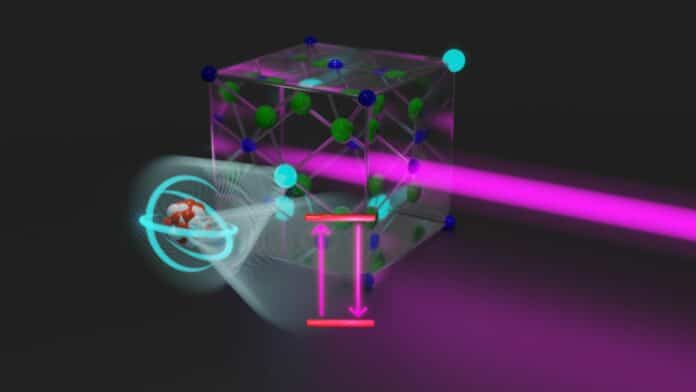There has been speculation since the 1970s that thorium-229, a unique atomic nucleus, can be manipulated using a laser in contrast to other nuclei. This nucleus contains two extremely close energy levels; in theory, changing the nuclear nucleus’s state should require a laser.
However, there was only indirect evidence of this transition’s existence. The issue is that using a laser beam to trigger the transition requires exceedingly accurate knowledge of the transition’s energy.
If you need to hit the correct energy with an accuracy of one-millionth of an electron volt to detect the transition, knowing the power of this transition to within one electron volt is not very useful. It’s similar to trying to locate a small treasure chest hidden on a kilometer-long island or trying to discover a needle in a haystack.
Scientists worldwide have been searching for a very specific state of thorium atomic nuclei that promises revolutionary technological applications. Physicists led by Prof. Thorsten Schumm from TU Wien (Vienna)have found the long-sought thorium transition: its energy is known precisely.
For the first time, it has become possible to precisely track the return of an atomic nucleus to its original state after transferring it into a higher energy state using a laser. This allows for the merging of nuclear physics with classical quantum physics, two branches of physics that were not previously closely related. This achievement required, among other things, the creation of unique crystals containing thorium.
Today, manipulating atoms or molecules with lasers is normal practice; if the laser’s wavelength is precisely selected, atoms or molecules can be changed from one state to another. This method can determine atomic and molecular energy with extreme precision. It is the foundation of many precision measuring techniques, including chemical analysis techniques and modern atomic clocks. Quantum computers also frequently use lasers to store data in atoms or molecules.
However, using similar methods on atomic nuclei appeared impossible for a long time. “Atomic nuclei can also switch between different quantum states.” Nonetheless, an atomic nucleus typically requires a thousand times more energy to change states.”
Prof. Thorsten Schumm from TU Wien (Vienna) said, “This is why normally atomic nuclei cannot be manipulated with lasers. The energy of the photons is not enough.”
Unfortunately, atomic nuclei are far smaller than atoms and molecules and less sensitive to outside disturbances like electromagnetic fields. However, they are the ideal quantum objects for precise measurements. Therefore, they would enable measurements with never-before-seen accuracy.
Previously, scientists tried to study thorium nuclei by holding them individually in place in electromagnetic traps. In this study, the team went ahead with a completely different technique. They developed crystals in which large numbers of thorium atoms are incorporated.
Despite its technical complexity, this allows us to analyze individual thorium nuclei and strike roughly ten to the power of seventeen thorium nuclei at once with the laser—that is, a million times more than the number of stars in our galaxy. Due to the enormous number of thorium nuclei, the effect is amplified, the necessary measurement time is shortened, and the likelihood of actually identifying the energy transition is increased.
Finally, on November 21, 2023, the team succeeded: the thorium nuclei produced a distinct signal for the first time, and the precise energy of the thorium transition was reached. In actuality, the laser beam had changed their condition. The outcome has been released now that the data has been thoroughly inspected and assessed.
Thorsten Schumm said, “This is a dream coming true for us. Since 2009, Schumm has focused his research entirely on the search for the thorium transition. His group and competing teams from all over the world have repeatedly achieved important partial successes in recent years. “Of course, we are delighted that we are now the ones who can present the crucial breakthrough: The first targeted laser excitation of an atomic nucleus.”
This study marks the beginning of a new, exciting era of research. Scientists now know how to excite the thorium state, and this technology can be used for precision measurements.
Thorsten Schumm said, “From the very beginning, building an atomic clock was an important long-term goal. Similar to how a pendulum clock uses the swinging of the pendulum as a timer, the oscillation of the light that excites the thorium transition could be used as a timer for a new type of clock that would be significantly more accurate than the best atomic clocks available today.”
Journal Reference:
- J. Tiedau, M. V. Okhapkin, K. Zhang, J. Thielking, G. Zitzer, E. Peik, F. Schaden et al. Laser excitation of the Th-229 nucleus. Physical Review Letters.
